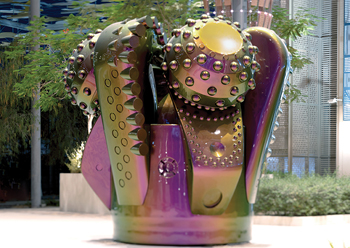
 A major highlight of the pavilion will be a kinetic façade which will keep changing, and tell the nation’s 75-year story.
A major highlight of the pavilion will be a kinetic façade which will keep changing, and tell the nation’s 75-year story.
India is all set to launch its mega 100,000-sq-ft pavilion for the upcoming Expo 2020 Dubai, showcasing its might and tradition, to the world especially when the country celebrates 75 years of independence.
This year, India will boast one of the largest pavilions at the event, on par with the US and China, offering visitors a peek into the progress it has made as a country and what the future holds, reported Indian Express.
The pavilion has been designed by a Delhi-based firm CP Kukreja Architects (CPKA) and is themed on opportunity, sustainability and mobility. London firm Muse is an associate consultant for the interior exhibits and display.
A major highlight will be a kinetic façade which will keep changing, and tell the nation’s story through the different lenses of technology, tradition, trade, talent and tourism, said the report, citing CPKA.
“Through 600 individual movable blocks on the façade, India’s 75th year of independence will be celebrated through 75 stories from different parts of the country,” remarked Dikshu Kukreja, Managing Principal of CPKA. “With nearly one lakh sq ft space, the pavilion includes a multistorey building that has space for B2B meetings, socio-cultural events and digital exhibits,” he stated.
In the evening, the façade will turn into a vibrant show with sound, light and projections. Campaigns of the government, which include Make in India, Digital India, Skill India and Start-up India, will be the key highlights, said the top designer.
“In earlier times, we restricted ourselves to showcasing only the crafts of India. But this year, the government wants to present a holistic view of India, which shows our connect with our past but also our transition into a progressive modern nation,” observed Kukreja.
On the architecture of the pavilion, Kukreja said it would take cues from the past in a building like the Jantar Mantar, which is modern in its essence, and from the chakra (which in sanskrit means wheel or disk) on the Indian flag, which will be an architectural element. The material used will be sandstone, he noted.
“It’s a proud demonstration of what India is all about and it’s our attempt to capture that from a design point of view. We want to present the diversity of India at multiple levels,” he added.

















.jpg)













 (1).jpg)















































